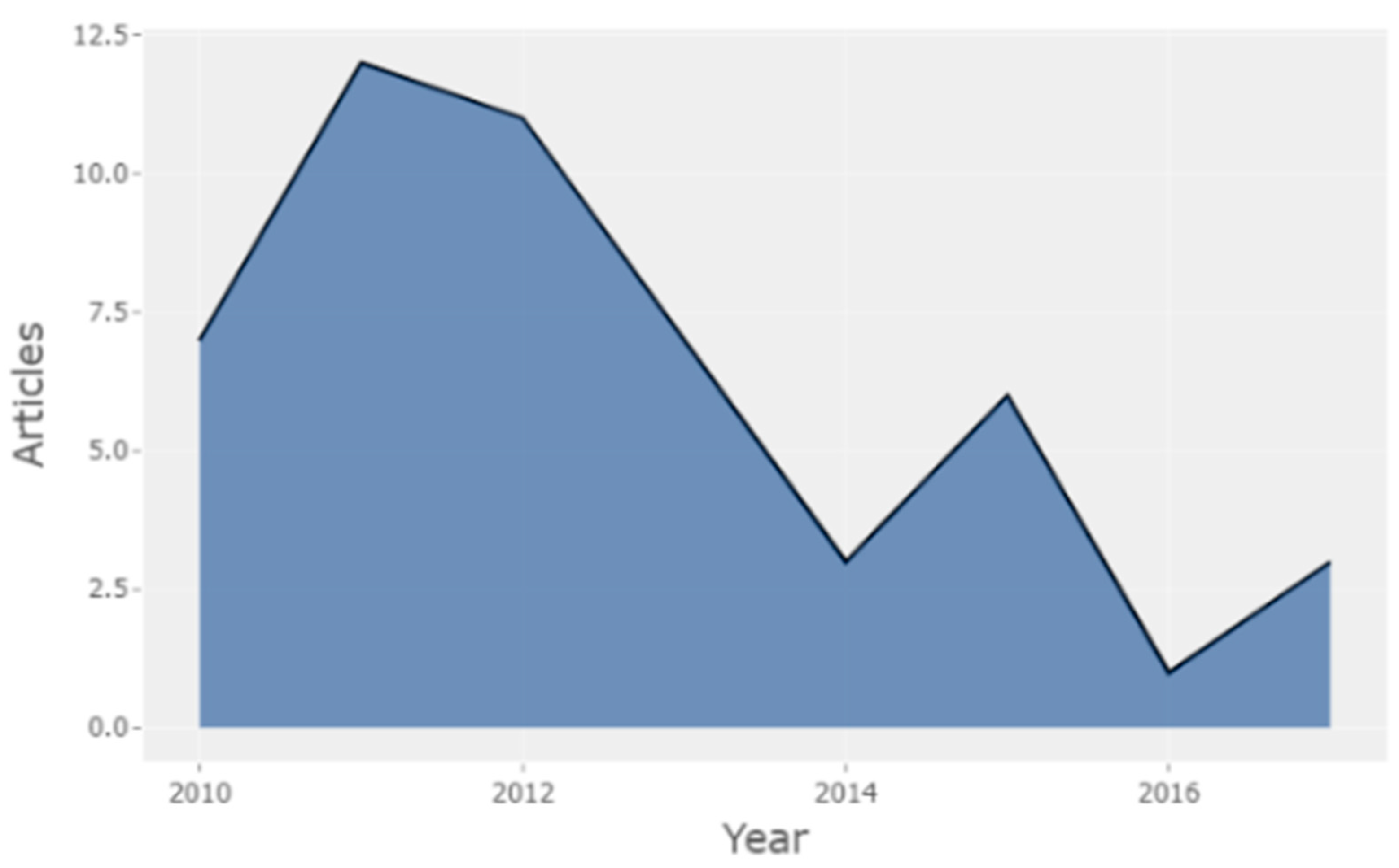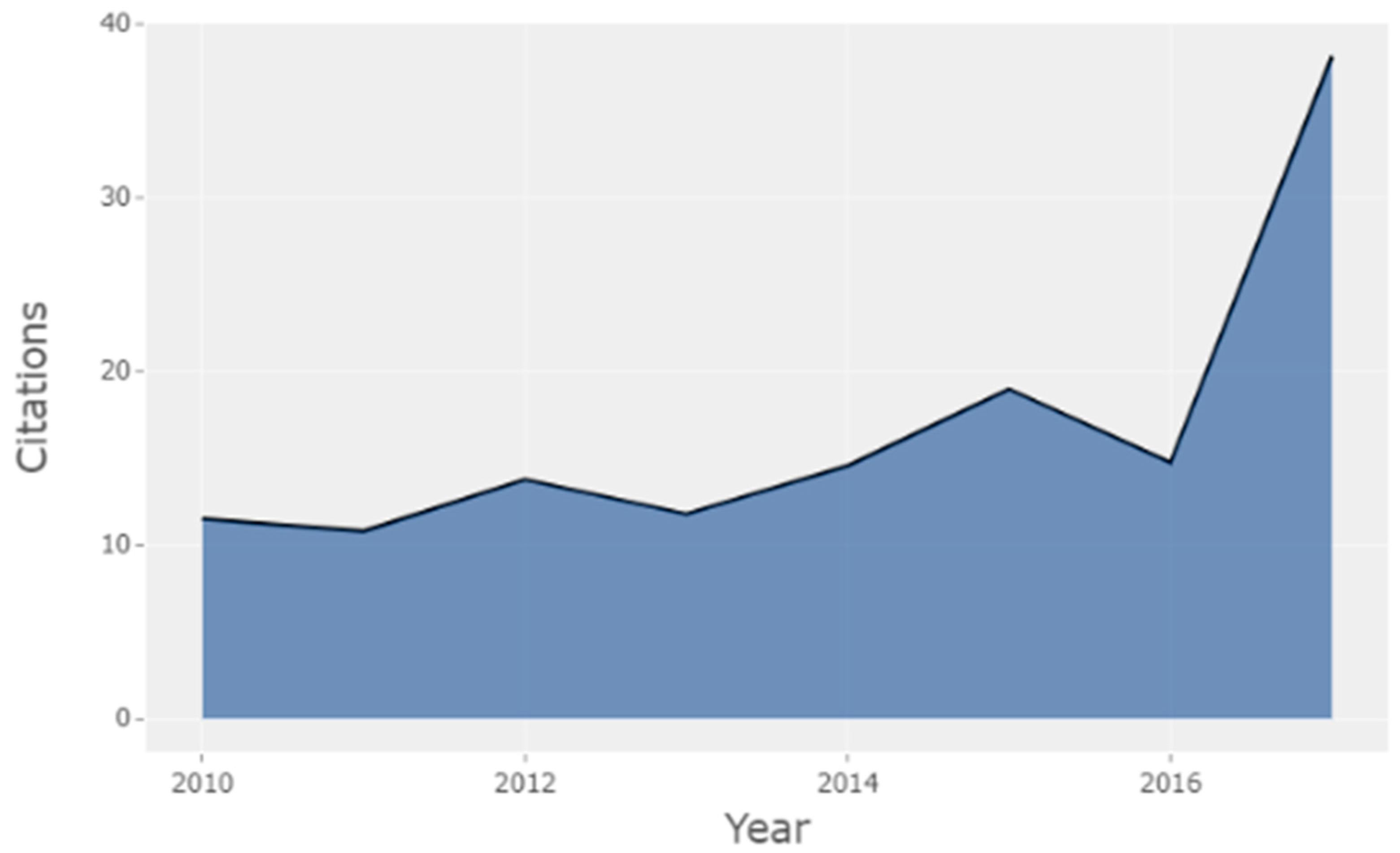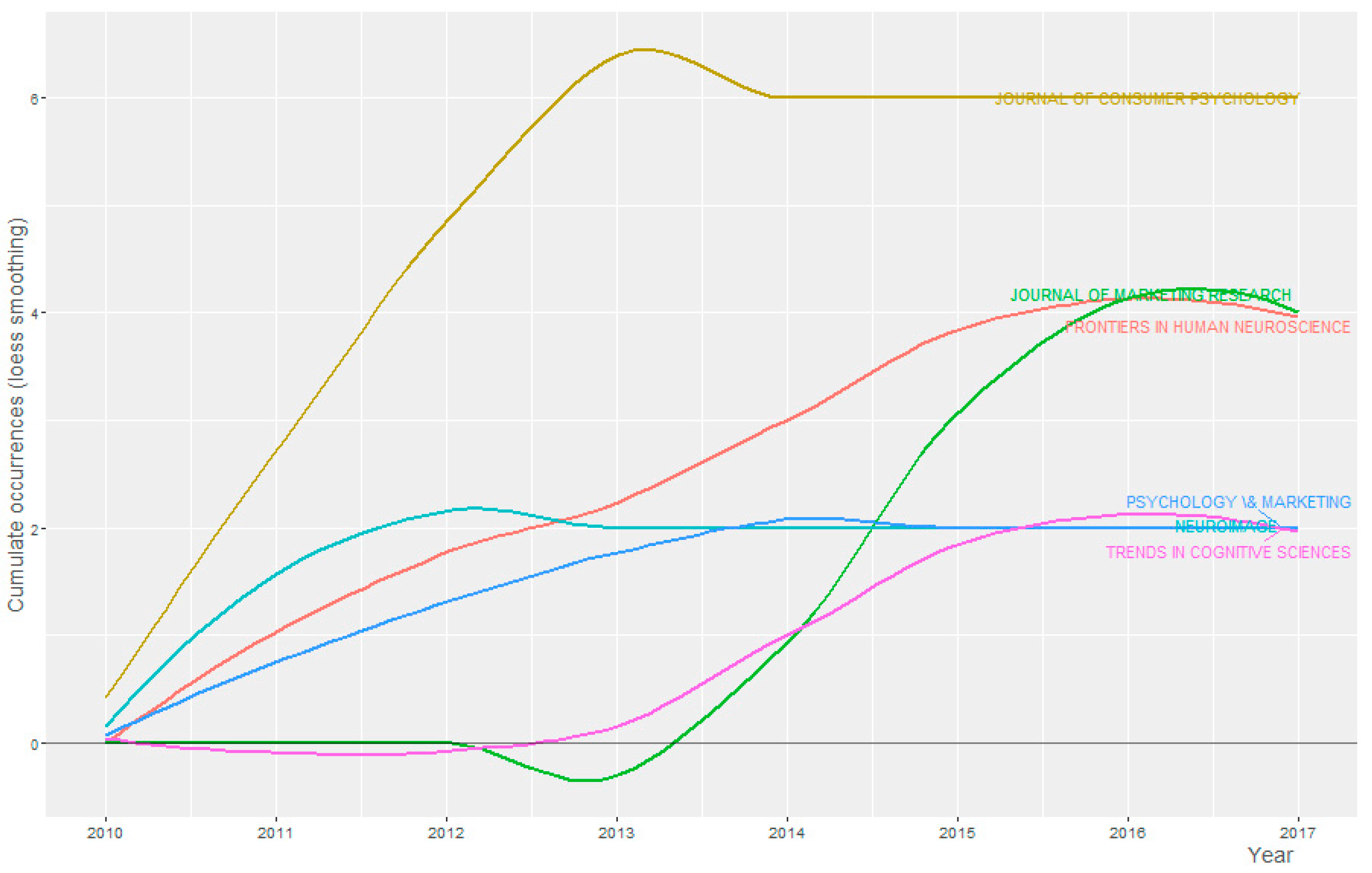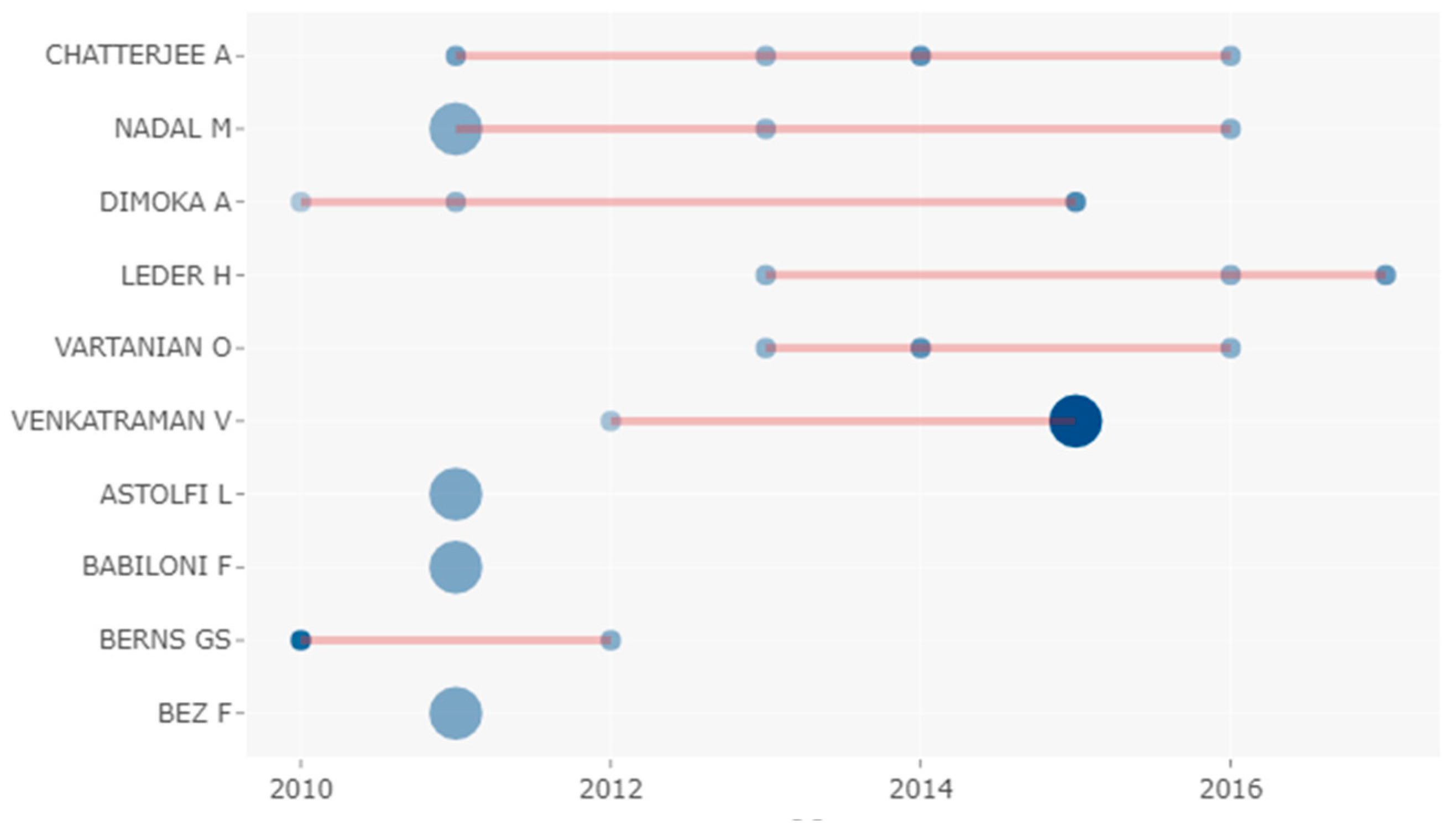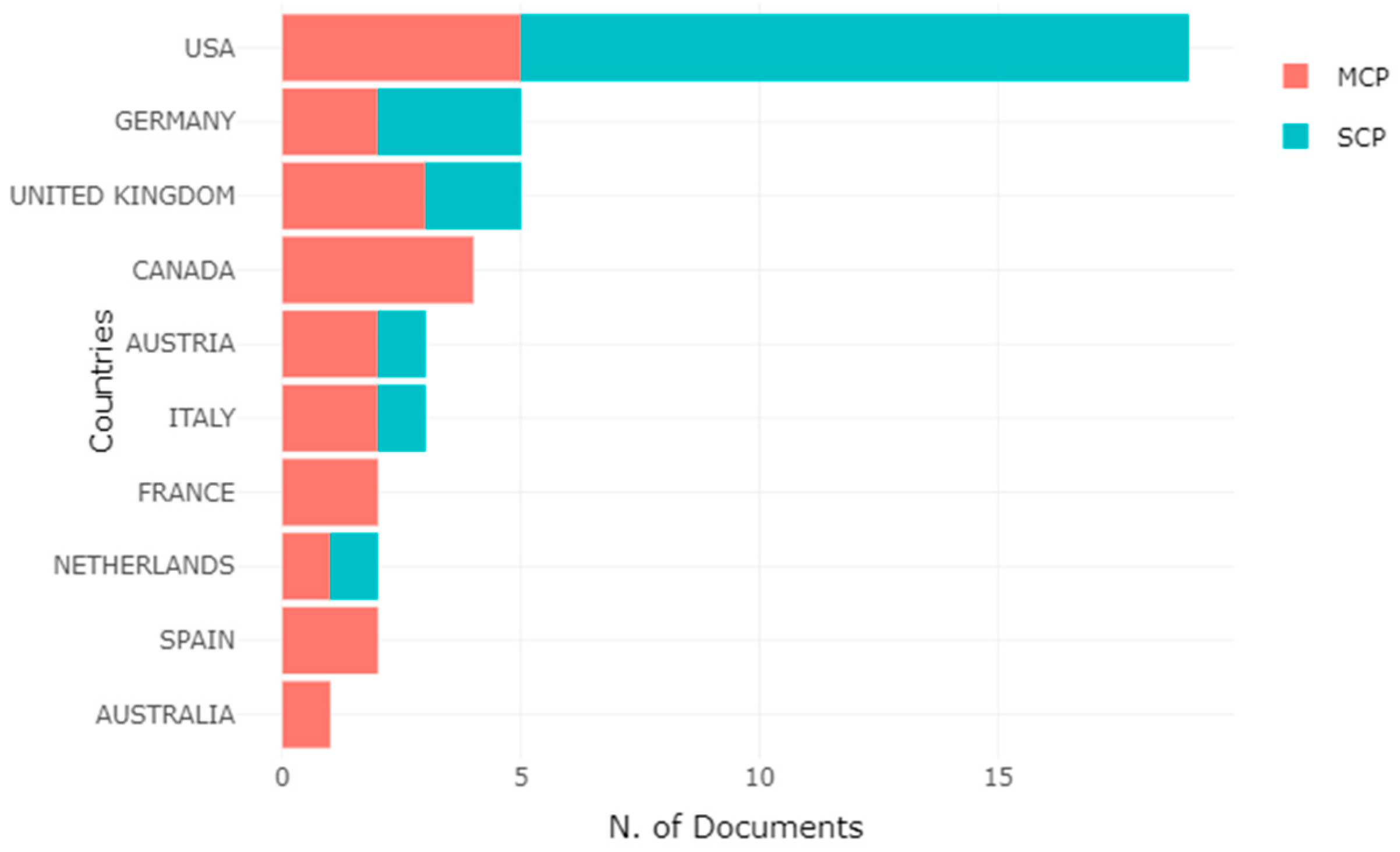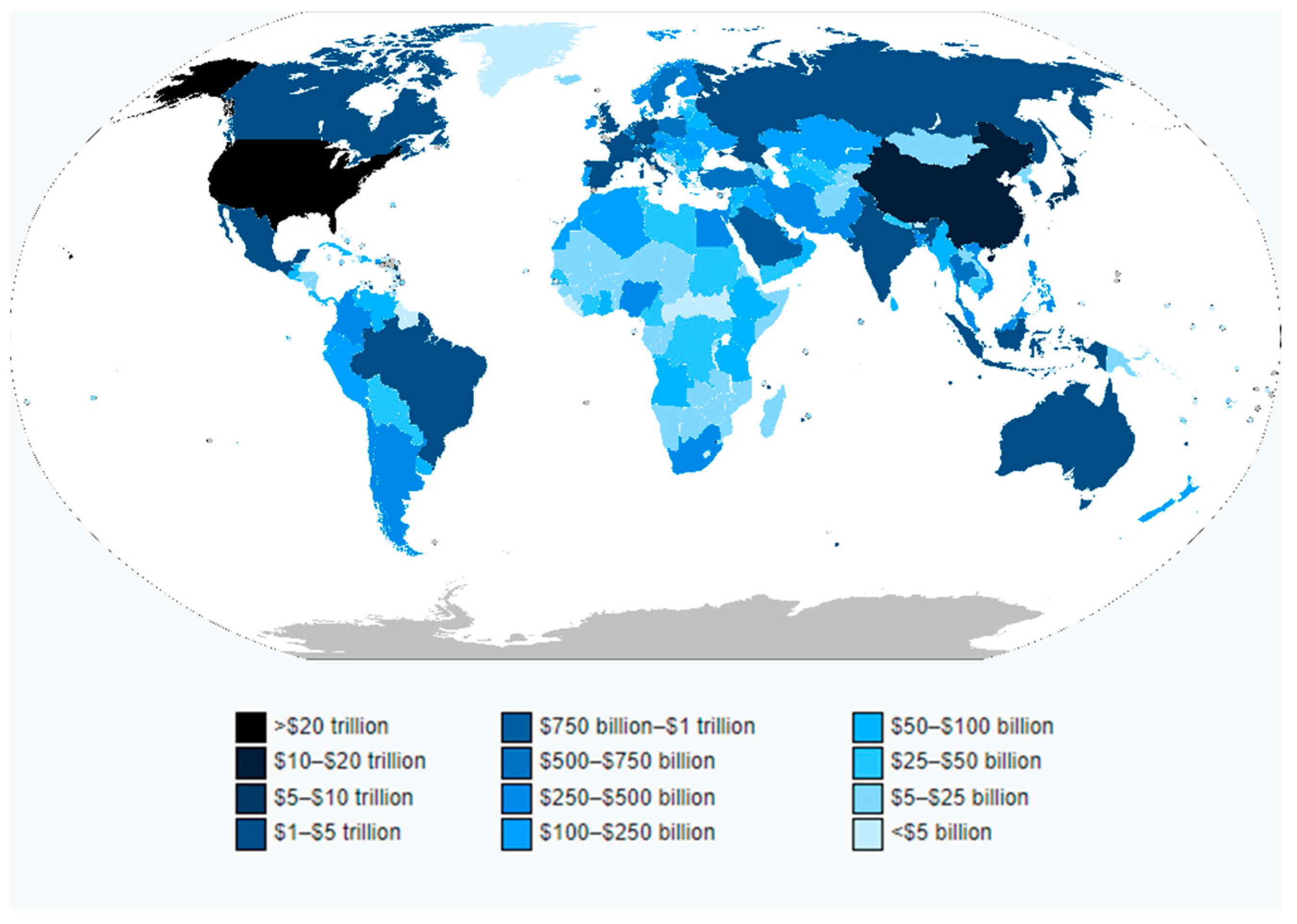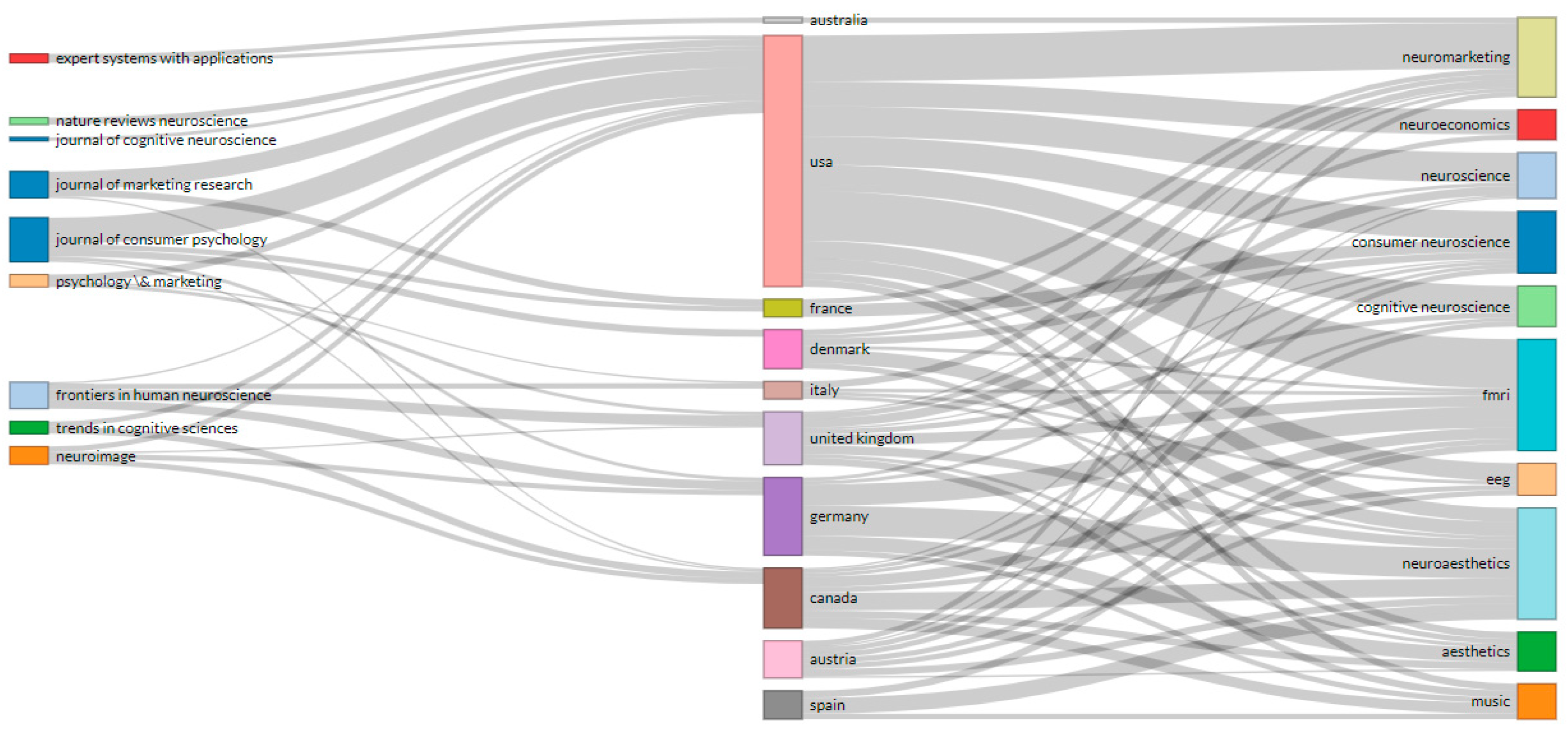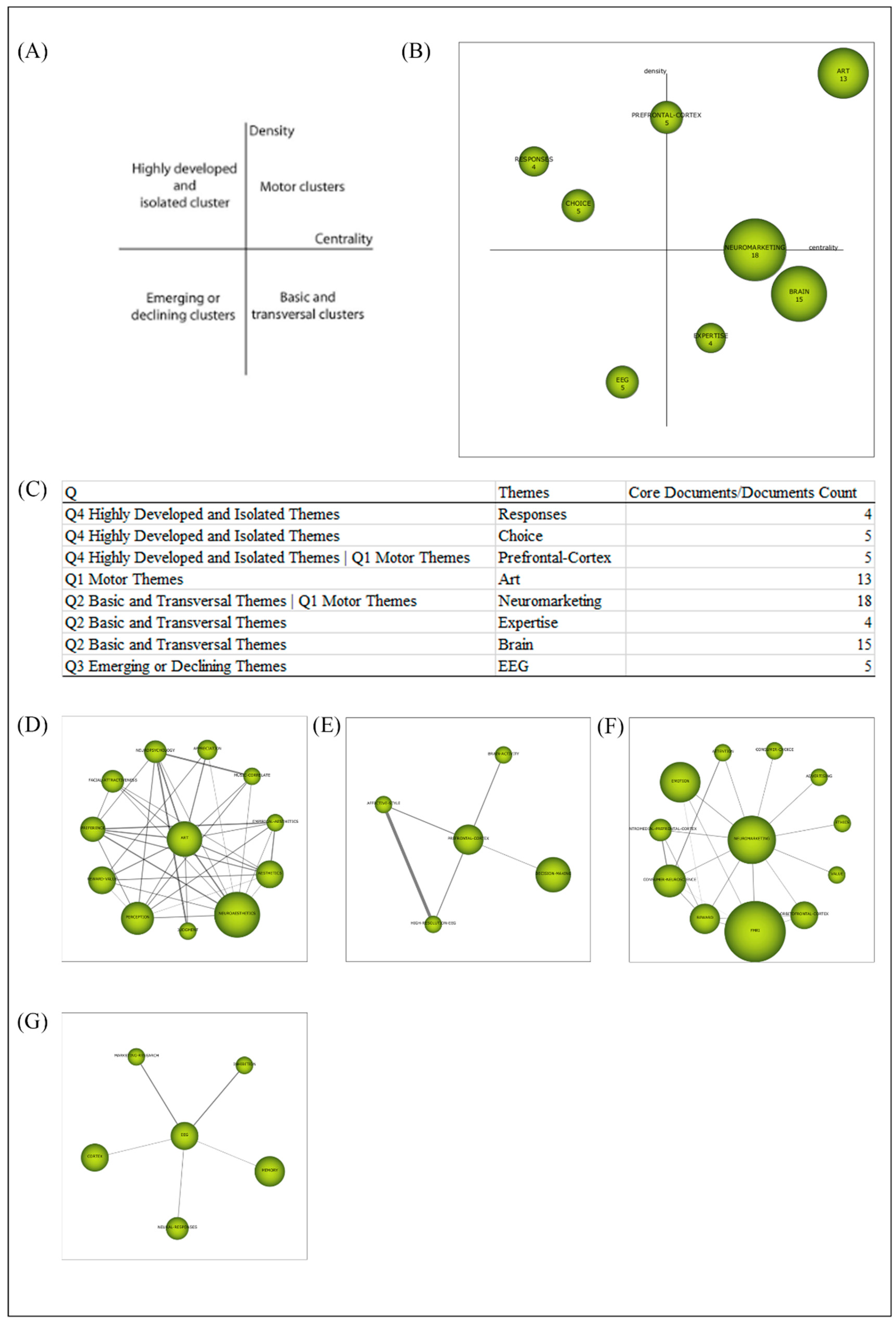1. Introduction
Consumer neuroscience, neuromarketing, and neuroaesthetics are three subfields of neuroscience, and play a key role in the design’s products, experiences, or services since they are concerned with how our brain perceives, process and reacts to the various stimuli presented in our environment [
1,
2,
3,
4].
Consumer neuroscience is the discipline that investigates the neural correlates of consumer decisions with a clear focus on progress in basic scientific understanding of the brain [
5], whereas neuromarketing is the discipline that tries to use the methodologies and insights from consumer neuroscience in applied research and business applications [
6], and neuroaesthetics, which the main goal is to characterize the neurobiological foundations and evolutionary history of the cognitive and affective processes involved in aesthetic experiences and artistic and creative activities as well as to recognize which are the subjective ratings and universal standard and patterns of beauty [
7,
8], by using all the power of functional magnetic resonances (fMRI), electroencephalography (EEG), pupillometry or eye-tracking techniques, among others to analyze what happens in our brain during the contemplation of beauty and ugliness [
9].
Previous research has demonstrated how consumer neuroscience, neuromarketing and neuroaesthetics are fundamental when it comes to determining new commercial viewpoints, analyzing the consumer in a non-intrusive way without asking questions or market research, refining the user experience, reinforcing the brand image, or crafting a marketing message that attracts quality leads and improves conversion rates, among others [
10,
11]. Furthermore, from the entrepreneur’s point of view, consumer neuroscience, neuromarketing and neuroaesthetics improve risk reduction, since experiences, products, and services are designed and developed according to the tastes of individuals. The objectives of these neuroscientific techniques are, precisely, to know how the nervous system translates the high number of stimuli to people exposed in different contexts, as well as to understand the consumer’s attitudes and motivations so that helps to anticipate and select the advertising and marketing strategy that causes the greatest emotional impact on individuals [
12,
13,
14]. Some of the recent studies in these subfields of neuroscience have not been without controversy regarding the relationship between consumer neuroscience, neuromarketing and neuroaesthetics. More specifically, in the field of neuroaesthetics, some different currents or detractors advocate a separation between empirical aesthetics and neuroaesthetics or demand a formal definition of what is one and what is the other [
15]. However, their view is not necessarily widely shared by the research community, and that, though there may be good arguments to merge consumer neuroscience, neuromarketing and neuroaesthetics, the fields currently are separated.
Within this context, synthesizing the results of recent and relevant research becomes a critical duty to advance in a specific research line. Through H-Classics methodology [
16], we can summarize the scientific production in a knowledge domain like consumer neuroscience, neuromarketing and neuroaesthetics. The H-Classics methodology [
16] is based on the study of “citation classic”, also called “literacy classic” or “classic article” [
17]. The H-Classics is an extension of the H-Index metric that is often used to quantify an individual’s research output [
18]. Some authors have established a criteria threshold in the number of articles designated, limiting the list to the 50 [
19] or 100 [
20] most cited ones, or restricting the selection to those articles that have been cited at least 400 times [
21]. Nevertheless, Martinez et al. [
22] proposed that the selection of classic articles should be based on two parameters:
- -
The computing of the H-Index [
18]. Burrell points out that the H-Index identifies the most productive core of an author’s output in terms of the most cited papers [
23].
- -
The computing of the H-Core, also called Hirsch Core. For this core, consisting of the first h papers, Rousseau [
24] introduced the term H-core, which can be considered as a group of high-performance publications concerning the scientist’s career [
23,
25].
The study of classic articles is crucial because they attract the interest of the scientific community and are therefore considered the “gold bars of science” [
26,
27] and permits analysis of the past, present, and future of a specific area of knowledge. The advantages of H-Classics are that, through a structured process, we can review the research work with the highest impact in a systematic, transparent, and reproducible way [
16,
28,
29,
30]. H-Classics method comprises the collection in a single process of the number of papers available in each field and their impact. It is also simple to compute and sensitive to alterations among areas in the impact of papers [
16]. Due to such virtues, several studies focused on highly cited papers (HCPs) and citation classics have been published in different disciplines. Highly cited papers are papers that perform in the top 1% based on the number of citations received when compared to other papers published in the same field in the same year. Some outstanding examples are H-Classics studies in rheumatology [
30], biology [
31], intelligent transportation systems [
32], social work [
33], implant dentistry, periodontics, and oral surgery [
29], aggregation operators in group decision making [
34], or fuzzy decision making [
28], and the rest.
To the best of our knowledge, there is no study covering the recent research about consumer neuroscience, neuromarketing and neuroaesthetics. The HCP of the consumer neuroscience, neuromarketing and neuroaesthetics research field has not been analyzed and explored yet from a Citation Classics scientometric perspective.
According to the aim stated above, some aspects can be analyzed by identifying the set of HCP: (I) the HCP distribution during the period studied; (II) the most productive journals, authors, institutions and countries; and, (III) the main topics covered by the papers detected.
Due to this high social importance, the present study aims at identifying the Highly Cited Papers (HCP) in consumer neuroscience, neuromarketing and neuroaesthetics disciplines, to deliver a summary of the academic work during the last decade in this area and to show tendencies, practices, methods, and findings that could be the basis for future advances in the discipline.
This study aims to answer the following research questions:
- ➢
RQ1. What are the leaders and knowledge hubs (most relevant authors, affiliations, countries, and sources) in consumer neuroscience, neuromarketing and neuroaesthetics?
- ➢
RQ2. What are the disruptive documents and sources (most relevant cited papers, references, and sources) in consumer neuroscience, neuromarketing and neuroaesthetics?
- ➢
RQ3. What is the conceptual structure (motor themes, and emerging or declining themes) in scientific publications about consumer neuroscience, neuromarketing and neuroaesthetics?
To do so, the paper is set out as follows:
Section 2, defines the materials, methods, and the approach used in the analysis,
Section 3 presents the results of our analysis, and, finally,
Section 4 concludes with the discussion, conclusion, and upcoming investigation approaches.
3. Results
3.1. Main Information about the Collection
Table 3 presents the summarized main results of the H-Classics analysis. The table displays key information about the bibliographic data retrieved and several sub-tables, such as annual scientific production, top manuscripts per number of citations, most productive authors, most productive countries, total citation per country, most relevant sources (journals), and most relevant keywords.
Additionally, various diverse co-authorship indices are exposed. In specific, the Authors per Article index is calculated as the ratio between the total number of authors and the total number of articles. The Co-Authors per Articles index is measured as the average number of co-authors per article. In this circumstance, the index reflects the author’s appearances while for the “authors per article” an author, even if he published more than one article, is counted only on one occasion (Authors per Article index ≤ Co-authors per Article index). The CI or Collaboration Index (Total Authors of Multi-Authored Articles/Total Multi-Authored Articles) is a Co-authors per Article index calculated only using the multi-authored article set [
41].
3.2. Distribution of Publications by Year and Record Count
Figure 1 shows the distribution of publications during the period 2010–2017. During the first five-year period of the study (2010–2014) there was a scientific production in H-Classics of 40 papers (
n = 40, 80%): seven papers published in 2010, 12 papers in 2011, 11 papers in 2012, seven papers in 2013 and three papers in 2014. During the second five-year period (2015–2019) there was a scientific production in H-Classics of 10 papers (
n = 20, 20%): six papers published in 2015, one paper published in 2016, three papers published in 2017, 0 papers published in 2018 and 0 papers published in 2019. As it can be seen, the first five years (2010–2014) were the most productive in H-Classics, with the highest scientific production, and 2011 the year with the highest sum of publications (12). The Figure shows results up to 2017, in this sense, papers published in consumer neuroscience, neuromarketing and neuroaesthetics during 2018 and 2019 have not reached the highly cited category (HCPs) by other authors, for this reason, they are not represented.
3.3. Average Citations per Year
Table 4 show the Average Citations per Year. The results show that 2010, with 7 H-Classics papers, was the year with the highest average percentage of citations per paper (115.14), considering that had 10 years of citation ahead of it (which is the length of the study period). However, the most satisfactory year in terms of total citations per year (TCpY) was 2017, with the highest peak (represented in
Figure 2), and with 3 H-Classics papers published and an average of 38.11 total citations per year (TCpY) and only 3 citable years (CY) (the remainder of the study period until 2019).
3.4. Most Local Cited Sources (from Reference Lists), Most Relevant Sources, Source Local Impact, and Source Dynamics
A source is a journal/book/conference proceeding series/etc. which published one or more documents included in our bibliographic collection. In our collection, we have a total of 36 different sources.
Table 5 shows Most Local Cited Sources (from Reference Lists). Local citations measure how many times a document included in this collection have been cited by the documents also included in the collection. A cited source is a journal/book/conference proceeding series/etc. included in at least one of the reference lists (bibliography) of the document set. In our collection, we have 1428 cited sources included in the 50 document bibliographies. In this case, NEUROIMAGE stands out in 1st position with 182 articles, in 2nd position JOURNAL OF NEUROSCIENCE with 117 articles, in 3rd position we found NEURON with 111 articles, in 4th position we found JOURNAL OF CONSUMER RESEARCH with 99 articles and in 5th position we found SCIENCE with 87 referenced articles.
Table 6 shows the most relevant sources, as well as the source local impact, the initial year of publication of the manuscripts in the sources, the total number of citations (TC), the number of publications (NP), the number of articles, and various indexes and metrics of scientific productivity such as the H-Index [
18], the G-Index [
42] and the M-Index [
43]. G-Index is a variant of the H-Index that, in its calculation, gives credit for the most highly cited papers in a data set and the G-Index is always the same as or higher than the H-Index and M-Index is another variant of the H-Index that displays H-Index per year since first publication [
44].
The most relevant source was in 1st place Journal of Consumer Psychology (with six published articles, a total of 739 citations and starting to publish articles from this selection in the year 2010), followed in 2nd position FRONTIERS IN HUMAN NEUROSCIENCE (with four articles, a total of 304 citations and starting to publish articles from this selection in the year 2011), in 3rd position JOURNAL OF MARKETING RESEARCH (with four published articles, a total of 389 citations and beginning to publish articles from this selection in the year 2015), in 4th place NEUROIMAGE (two articles, a total of 238 citations and beginning to publish articles from this selection in the year 2011) and in 5th place PSYCHOLOGY & MARKETING (with two published articles, a total of 259 citations and beginning to publish articles from this selection in the year 2011).
The distribution frequency of articles (
Figure 3) indicates the sources dealing with the issue and related topics and it calculates yearly published documents of the top sources (
Table 7). Between 2011 and 2014, it was substantial growth in the number of publications on the subject. The graph shows the result of the Loess regression. As variables, it includes the number and the publication time of the source under study. This method allowed the function to assume a limitless distribution, that is, it permits the function to adopt values below zero if the data is near to zero. It contributed to a better graphic result and highlights the break in the history of the publications [
45].
3.5. Most Relevant Authors, Author’s Impact, Most Local Cited Authors, Top-Authors’ Production over the Time and Corresponding Author’s Country
Table 8 shows the most relevant authors and their local impact. It quantifies an individual author’s contribution to a published set of papers. The two authors who had the major scientific production in H-Classics were in 1st position, the researcher A. Chatterjee with four papers in H-Classics and a total of 438 citations and 2nd position the researcher M. Nadal, also with four papers in H-Classics and a total of 272 citations.
Publication Year Start indicates the first year the author published in (in the set of included studies). Chatterjee and Nadal started publishing papers that are part of the H-Classics collection in 2011.
Table 9 shows the generated frequency table of the Most Local Cited Authors. Local Cited Authors measure how many times an author included in this collection have been cited by the authors also included in the collection. Chatterjee, besides being one of the authors with more scientific production and with the highest impact was also an author of reference for the authors of H-Classics appearing in other works (being cited more than 54 times).
Figure 4 and
Table 10 show the Author’s Production Over Time. The function visually represented calculates and plots the authors’ production (in terms of the number of publications, and total citations per year) over time.
Total citations represent the number of times each manuscript has been cited and Total citations per year represent the yearly average number of times each manuscript has been cited.
The three authors who had a longer and more consistent trajectory in H-Classics were: Chatterjee (2011–2016), Nadal (2011–2016), and Dimoka (2010–2105). Chatterjee was the author, who besides having one of the longest and most consistent trajectories in H-Classics during the period studied, had H-Classics publications almost every year of those five years (four publications). Venkatraman was the author, who, despite having one of the shortest trajectories in H-Classics during the studied period, presented several works in 2015 that make him the author with the highest TC/TCpY (two H-Classics publications freq., 229 citations and total citations per year of 38.167).
Figure 5 shows the data visualization of the countries of origin of the most relevant corresponding authors of the H-Classics selection. The correspondence author (APC) or designated co-author is the person who will serve as a representative on behalf of all co-authors, by establishing contact during the process of submission, review, and final editing of the manuscript with the editor-in-chief and associate editors of a particular journal. MCP represents the inter-country and SCP represents the intra-country collaboration indices corresponding author of each manuscript. MCP indicates, for each country, the number of documents in which there is at least one co-author from a different country. In contrast, the SCP represents scientific papers that have been published and all co-authors of the manuscript have an affiliation from the same country. As can be seen in
Figure 5 and
Table 11, the USA stands out from the rest of the selection with a total of 19 corresponding authors in 19 different articles and a frequency of 38 participations, followed by Germany in 2nd place with a total of five corresponding authors in five articles and a frequency of 10 corresponding authors, and in 3rd place the United Kingdom with a total of five corresponding authors in five articles and a frequency of 10 corresponding authors. The USA had a rather high publication rate in intra-collaboration, more than half of their scientific output in H-Classics. Also, to a lesser extent Germany and United Kingdom. However, Canada, France, Spain, and Australia had a presence in production in terms of corresponding authors, but we observe how the work they have produced has been through the authors’ inter-collaboration.
3.6. Most Relevant Affiliations (Organizations)
Table 12 shows the most relevant affiliations, the frequency distribution of affiliations of all co-authors for each paper. Two international reputation and excellence rankings of worldwide universities were used to compare the results: ARWU World University Rankings 2019 [
46] and QS World University Rankings 2019 [
47].
Temple University was the American university with the largest volume of articles (12), followed by the American universities University of Pennsylvania (2nd position and 10 articles), Duke University (3rd position and eight articles), Emory University (6th position and five articles), The University oF California, Los Angeles (7th position and five articles) and Columbia University (9th position and four articles). The rest of the institutions were European organizations belonging to Germany (Freie Universität Berlin in 4th position and eight articles), Denmark (Copenhagen Business School in 5th position and five articles), the UK (the University of Oxford in 8th position and five articles) and the Netherlands (Erasmus Universiteit Rotterdam in 10th position and 4 articles).
All the research centres and organizations selected in the table had a presence in at least one of the two prestigious international university rankings (QS/ARWU) and all of them occupied relevant positions within the university reputation rankings.
3.7. Country Scientific Production and Most Cited Countries
Table 13 shows the affiliation countries’ frequency distribution. To understand the research productivity of a nation, the resulting frequency of scientific production by country was compared with the international monetary indicator Gross Domestic Product (GDP) 2019 World Bank [
48]. The Gross Domestic Product (GDP) measures the monetary value of a country’s production of final goods and services during a year. GDP is commonly used as a measure of the degree of the well-being of a country’s population [
49].
The USA was positioned in 1st place in scientific production with a frequency of 111, followed by GERMANY with a frequency of 27 and the UK also with the same frequency. These countries, apart from having the largest scientific production in H-Classics in consumer neuroscience, neuromarketing and neuroaesthetics, also occupy the first positions in the economic and welfare development international indexes (
Figure 6 and
Table 13).
Table 14 shows the countries that have received the highest total citations among the 50 H-Classics documents published and classified. Among the 50 selected papers, many of the selected authors chose articles to reference their scientific works having their origin of scientific production in the USA (2265 citations), followed by Germany (446 citations), Canada (406), United Kingdom (391 citations) and France (250 citations).
3.8. Sources, Countries and Keywords: Three-Fields Plot
Figure 7 shows relationships among Top Sources (left field), Top Countries (middle field), and Top Keywords (right field) and several items (1–10) summarized by a Sankey Plot. Sankey’s diagrams show the flows and their quantities in proportion to each other. The width of the arrows or lines is used to show their magnitudes, so the larger the arrow, the greater the amount of flow. The flow arrows or lines can be combined or divided through their paths at each stage of a process. The colour can be used to divide the diagram into different categories or to show the transition from one state of the process to another [
51].
The USA was the country that published the H-Classics selection in the most relevant sources (Expert Systems with Applications, Nature Reviews Neuroscience, Journal of Cognitive Neuroscience, Journal of Marketing Research, Journal of Consumer Psychology, Psychology & Marketing, Frontiers in Human Neuroscience, Trends in Cognitive Sciences and Neuroimage. It was also the only country that used the Top 10 most frequently used keywords in the different studies (‘neuromarketing’, ‘neuroeconomics’, ‘neuroscience’, ‘consumer neuroscience’, ‘cognitive neuroscience’, ‘fMRI’, ‘EEG’, ‘neuroaesthetics’, ‘aesthetics’ and ‘music’). Out of the Top 10 countries, neither Spain nor Austria published in the Top main journals on the studied subject. The two keywords used in most of the countries were ‘fMRI’ and ‘neuroaesthetics’.
3.9. Most Global Cited Documents and Most Local Cited References
Table 15 shows the list of the most relevant manuscripts sorted by citations from the H-Classics selection (50 documents). Global Citations (TC) means the Total Citations that an article, included in the selected collection, has received from documents indexed on a bibliographic database (WoS, Scopus, etc.). So, TC counts citations received by a selected article “all over the world”. The most frequently cited work was ‘
Neuromarketing: the hope and hype of neuroimaging in business’ [
52], a research study about the application of neuroimaging methods to product marketing with 332 citations and a total citation per year of 30.18.
Table 16 shows the generated frequency table of the Most Cited References. It refers to the scientific document included in at least one of the reference lists (bibliography) of the document set. In our collection, we have more than 3700 references included in the 50 document bibliographies.
The most frequently cited local reference was the scientific work
‘Neural correlates of behavioural preference for culturally familiar drinks’ [
60]. a research study where the authors delivered Coke and Pepsi to human subjects and examined them in behavioural taste tests and passive experiments carried out during functional magnetic resonance imaging (fMRI). The scientific work was cited 17 times in our H-Classics collection.
3.10. Conceptual Structure (2010–2019): Period View and Strategic Diagram (Network and Performance Measures Based on Words Analysis)
Figure 8A shows the Callon’s density and centrality as network measures [
21,
69] to each detected cluster in the selected period. The strategic diagram is divided into 4 quadrants (upper-right quadrant defines motor clusters, upper-left quadrant defines highly, developed, and isolated clusters, lower-left quadrant defines, emerging or declining clusters and lower-right quadrant defines basic and transversal clusters). Callon’s centrality measures the degree of interaction of a network with other networks, and it can be understood as the external cohesion of the network and Callon’s density measures the internal strength of the network, and it can be understood as the internal cohesion of the network.
Figure 8B represents the strategic diagram during the period 2010–2019.
Figure 8C shows the Quadrant distribution/Themes/Documents count.
Figure 8D shows ART cluster, (E) PREFRONTAL CORTEX cluster, (F) NEUROMARKETING cluster, and (G) EEG cluster. Were analyzed the two quadrants (upper-right and lower-left) that we considered essential and most interesting for the development of the research area:
Upper-right or (Q1) Motor clusters with ART cluster (PREFERENCE, FACIAL ATTRACTIVENESS, NEUROPSYCHOLOGY, APPRECIATION, MUSIC CORRELATE, EMPIRICAL AESTHETICS, AESTHETICS, NEUROAESTHETICS, JUDGEMENT, PERCEPTION, and REWARDS VALUE) presents studies centred in experiments on aesthetic experiences by investigating behavioural, neural, and psychological properties of package design through fMRI, neuroimaging studies of positive-valence aesthetic appraisal across four sensory modalities, and studies related to systematic and literature reviews about neuroaesthetics and aesthetic experience.
Upper-right or (Q1) Motor cluster with NEUROMARKETING cluster, limiting with (Q2) Basic and Transversal cluster (ATTENTION, CONSUMER CHOICE, ADVERTISING, ETHICS, VALUE, ORBITOFRONTAL CORTEX, FMRI, REWARD, CONSUMER NEUROSCIENCE, VENTROMEDIAL PREFRONTAL CORTEX, and EMOTION) presents studies associated to an overview of the current and previous research in consumer psychology of brands and the role of researchers and practitioners when applying neuroscience to the consumer psychology of brands, investigations about physiological decision processes while participants undertook a choice task designed to elicit preferences for a product using EEG and eye-tracking.
Upper-right or (Q1) Motor cluster with PREFRONTAL CORTEX cluster, limiting with (Q4) Highly Developed and Isolated cluster (BRAIN ACTIVITY, AFFECTIVE STYLE, DECISION MAKING, and HIGH-RESOLUTION EEG) presents research focused on Applications, Challenges, and Possible Solutions in consumer neuroscience, changes in the EEG frontal activity during the observation of commercial videoclips, overviews of published papers about marketing research employing electroencephalogram (EEG) and magnetoencephalogram (MEG) methods and, fMRI studies using concealed information paradigm in which participants were trained to use countermeasures and to defeat deception detection.
Lower-left or Emerging or declining clusters (Q3) with EEG cluster (Marketing Research, Inhibition, Memory, Neural Responses, and Cortex) presents studies related to systematic and literature reviews about consumer neuroscience and marketing, brain responses to movie trailers to predict individual preferences for movies and commercial success, studies about abstract art and cortical motor activation through EEG, studies to predict consumers’ future choices through EEG and studies about the identification of frontal cortex activation in reaction to TV advertisements.
